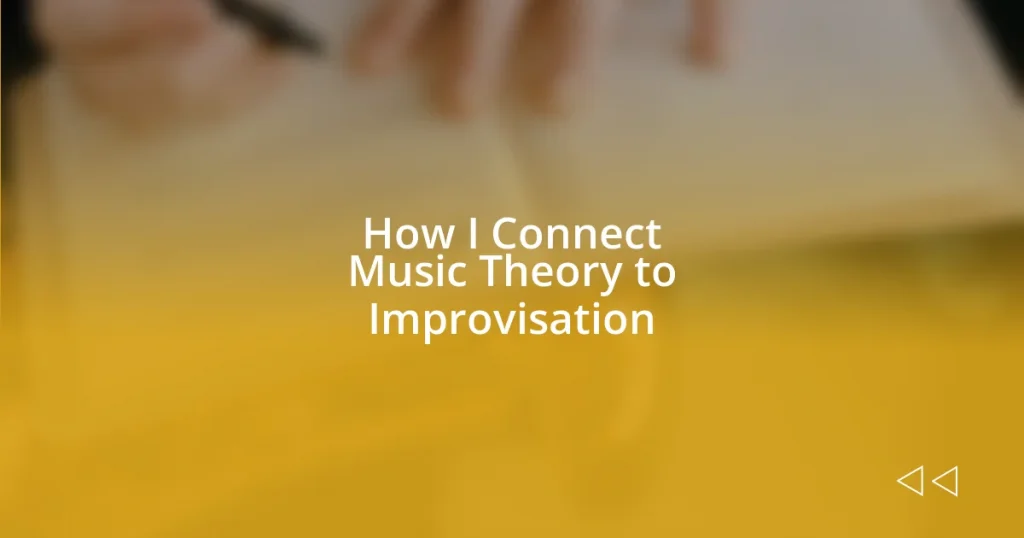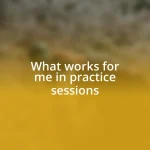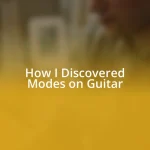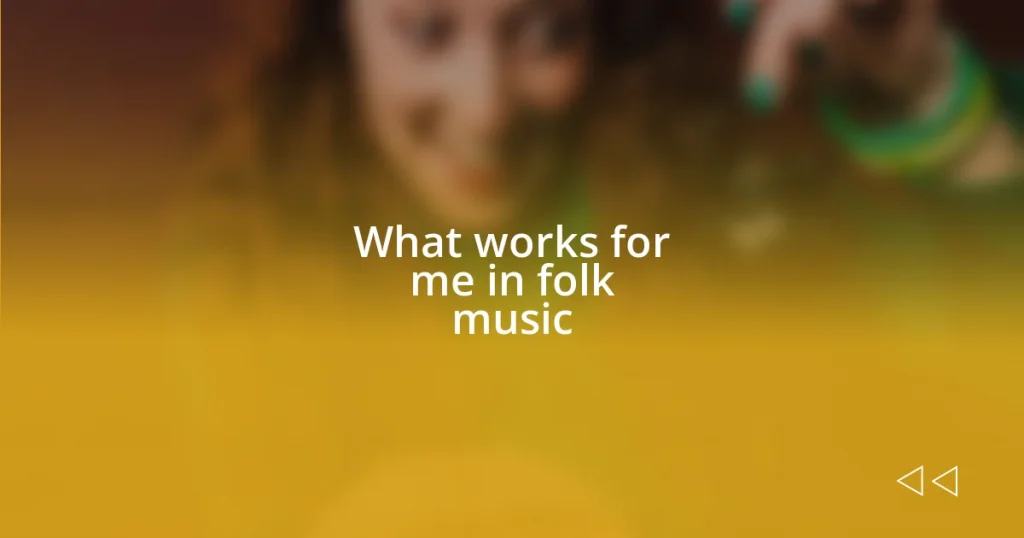Key takeaways:
- Understanding the basics of music theory, including scales, chords, and intervals, enhances emotional connection and improvisational skills.
- Chord progressions and rhythmic patterns are essential for creating dynamic improvisation, enabling musicians to evoke emotions and engage the audience.
- Integrating various scales and melodic ideas into practice allows artists to explore new sounds and deepen their musical expression, often transforming performances into storytelling experiences.
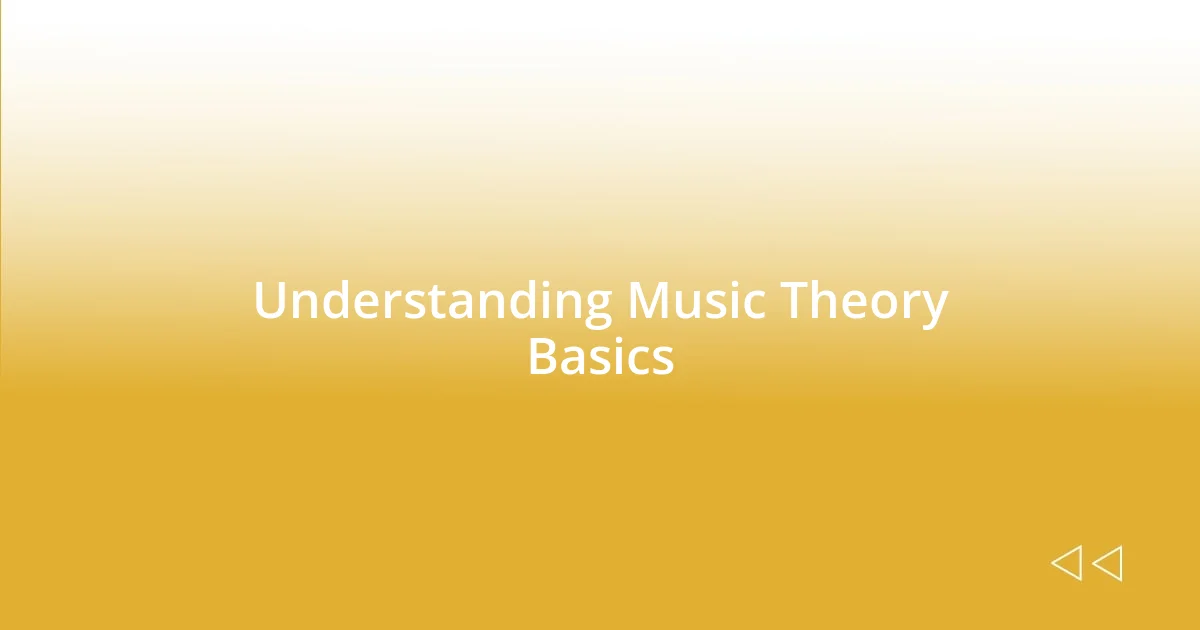
Understanding Music Theory Basics
Music theory can feel overwhelming at first, but it all starts with the basics, like scales and chords. I remember when I first grasped the concept of the major scale; it was like unlocking the door to a whole new world. Have you ever felt that exhilarating rush when something finally clicks? That’s exactly how I felt, and it lit a fire in my passion for improvisation.
Understanding intervals— the distance between notes— is also crucial. I can still picture sitting at the piano, examining how a simple interval can change the emotion of a piece completely. Isn’t it fascinating that adjusting just one note can transform a happy melody into something more somber? This kind of exploration fosters a deeper emotional connection to the music we create.
Lastly, let’s talk about chords and how they function, as they form the backbone of our harmonic language. I recall a jam session where I stumbled over a transition; it was awkward until I recalled the chord progressions I’d studied. What if I had approached it with a solid grasp of theory? The ability to anticipate and resolve musical tension makes improvisation feel natural and intuitive, rather than forced.
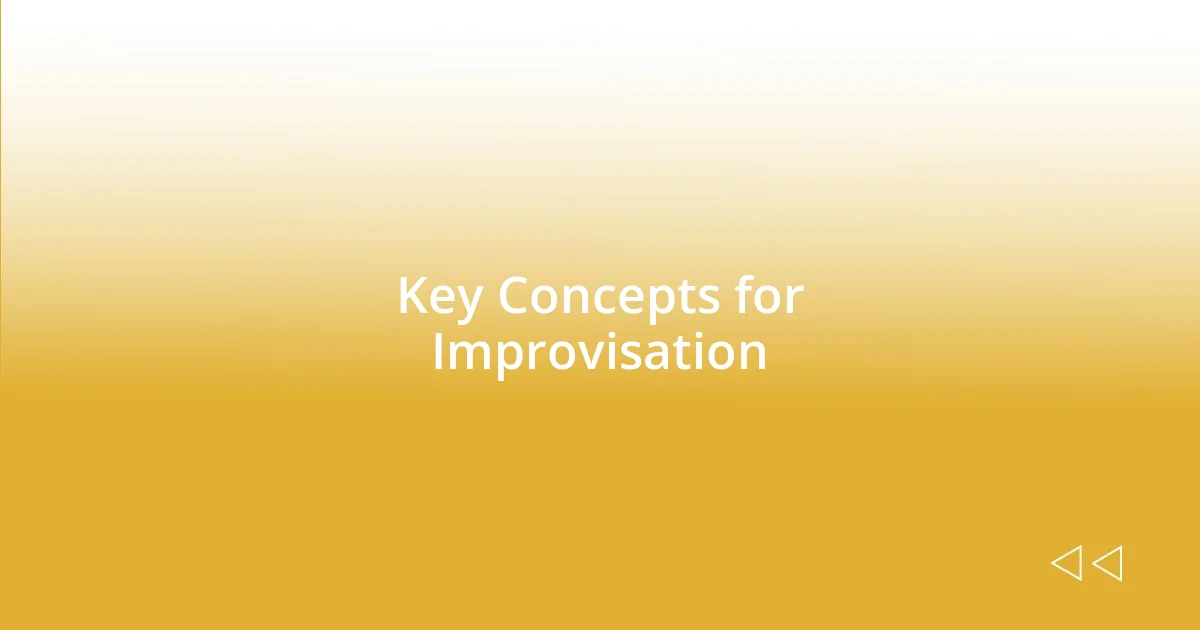
Key Concepts for Improvisation
When diving into improvisation, one of the key concepts is recognizing the significance of chord progressions. Early on in my musical journey, I remember feeling lost in a complex piece, grappling with the changes. But then I discovered how certain progressions create emotional arcs, guiding the listener through peaks and valleys. It was like finding a map; suddenly, every note I played felt more meaningful, as if I were telling a story.
Here are some key points to keep in mind about chord progressions:
- Common Progressions: Familiarize yourself with classic chord sequences like I-IV-V or ii-V-I, as they form the foundation of countless songs.
- Emotional Coloring: Different progressions evoke different feelings; know how each can shape a musical narrative.
- Voice Leading: Pay attention to how each chord connects to the next; smooth transitions can enhance your improvisational flow.
Understanding rhythm also plays a vital role in improvisation, perhaps more than many realize. I recall a moment during a group session when everyone was a bit hesitant. Then, someone started to incorporate syncopation, and suddenly, the energy shifted. The groove came alive! That experience taught me how dynamic rhythm can transform a simple melody into something unforgettable.
Key aspects of rhythm in improvisation include:
- Syncopation: Embrace off-beat rhythms to add excitement and surprise in your playing.
- Tempo Variation: Shifting tempos can dramatically change the feel of a piece; don’t be afraid to experiment.
- Rhythmic Patterns: Develop a bank of patterns that resonate with you, allowing for spontaneous creativity during improvisation.
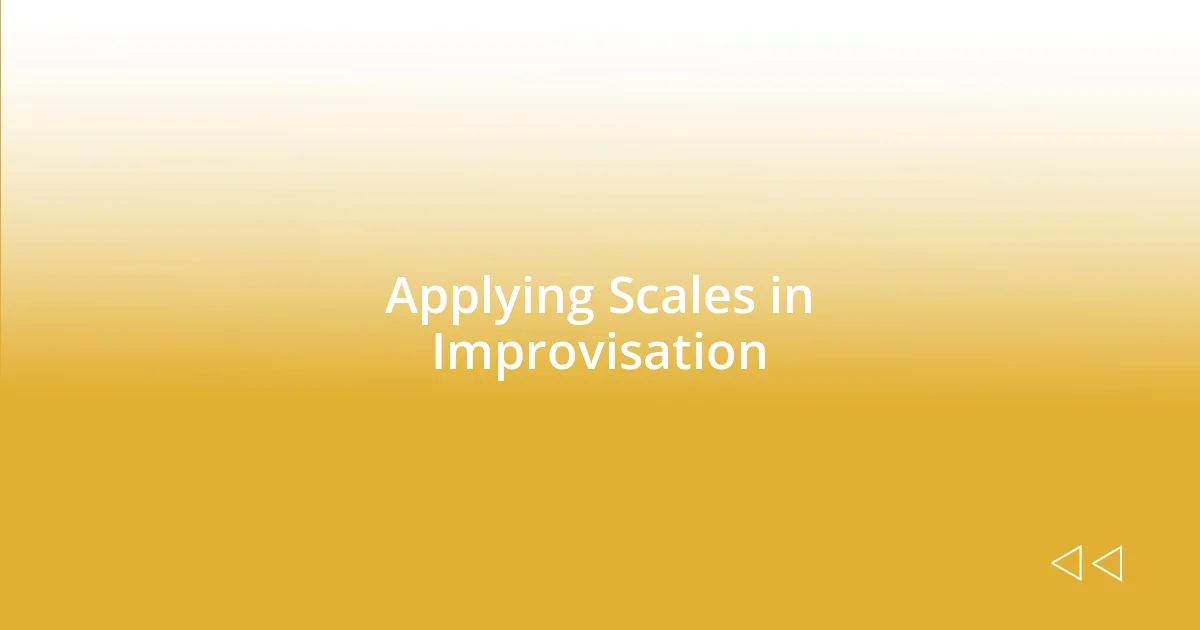
Applying Scales in Improvisation
Applying scales in improvisation transforms how we express ourselves musically. I vividly remember the first time I used a pentatonic scale during a jam session. The vocalist was lost in the moment, and I made a bold choice to weave in those five notes. It was exhilarating! The simplicity of the pentatonic not only complemented her melodies but also allowed me to explore and play freely. It felt like dancing within a structure rather than being confined by it.
When I dive into different scales, I observe how each brings its unique flavor to my improvisation. For instance, I often favor the blues scale for its rich, expressive qualities. One night, while playing in a more lively setting, I switched from the major scale to the blues scale, instantly lifting the energy in the room. Isn’t it amazing how a slight shift in tonal palette can create a significant change in atmosphere? The emotional response from the audience was palpable.
To me, integrating modes into my improvisation has been one of the most rewarding experiences. Each mode infuses a different emotional texture into my playing. For example, using the Dorian mode gives me a jazzy feel, while the Mixolydian mode brings out a more bluesy vibe. In one memorable performance, I switched to the Locrian mode during a particularly tense moment, creating an intense atmosphere that resonated deeply. Have you ever noticed how certain scales can evoke powerful emotions? When I harness these scales thoughtfully, I find my improvisation becomes a true reflection of my inner landscape.
| Scale Type | Application in Improvisation |
|---|---|
| Major Scale | Bright, cheerful solos; foundational for many genres. |
| Pentatonic Scale | Great for melodic solos; offers freedom in phrasing. |
| Blues Scale | Rich, expressive sound; ideal for conveying deep emotion. |
| Dorian Mode | Jazz-inspired feel; good for layering harmonies. |
| Mixolydian Mode | Bluesy vibe; adds interest to traditional progressions. |
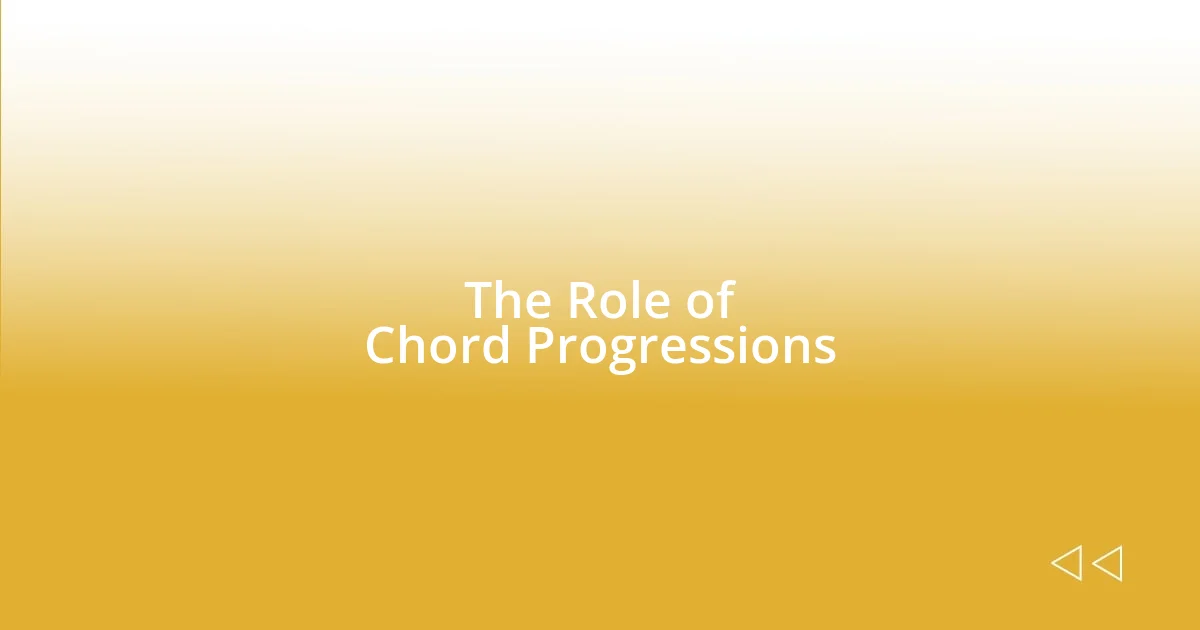
The Role of Chord Progressions
When I approach improvisation, chord progressions feel like the backbone of my creativity. I remember a night jamming with friends when we stumbled upon a classic I-IV-V progression. As we traded solos, I noticed how the predictable path we were following created space for unexpected flourishes in our playing. Isn’t it fascinating how a familiar sequence can breed spontaneity and excitement?
It’s not just about playing the chords; it’s about the emotions they evoke. Take the ii-V-I progression, for instance. The tension builds beautifully before resolving, almost like a sigh of relief. During one session, I used it to capture a sense of longing that brought the whole room to silence. I could feel the unspoken connection with my audience; it was electric. Have you ever felt that pure joy of knowing you’ve struck the right emotional chord with your listeners?
Understanding the subtleties within progressions has also been a game changer for my improvisation. For example, I often experiment with changing the order of chords to shake up expectations. One time, I reversed a familiar progression mid-solo, and the surprised looks on my bandmates’ faces were priceless! This shift not only caught them off guard but also opened up new avenues for exploration. The beauty of chord progressions lies in their ability to transform a moment; don’t you think that’s what makes music an everlasting journey?
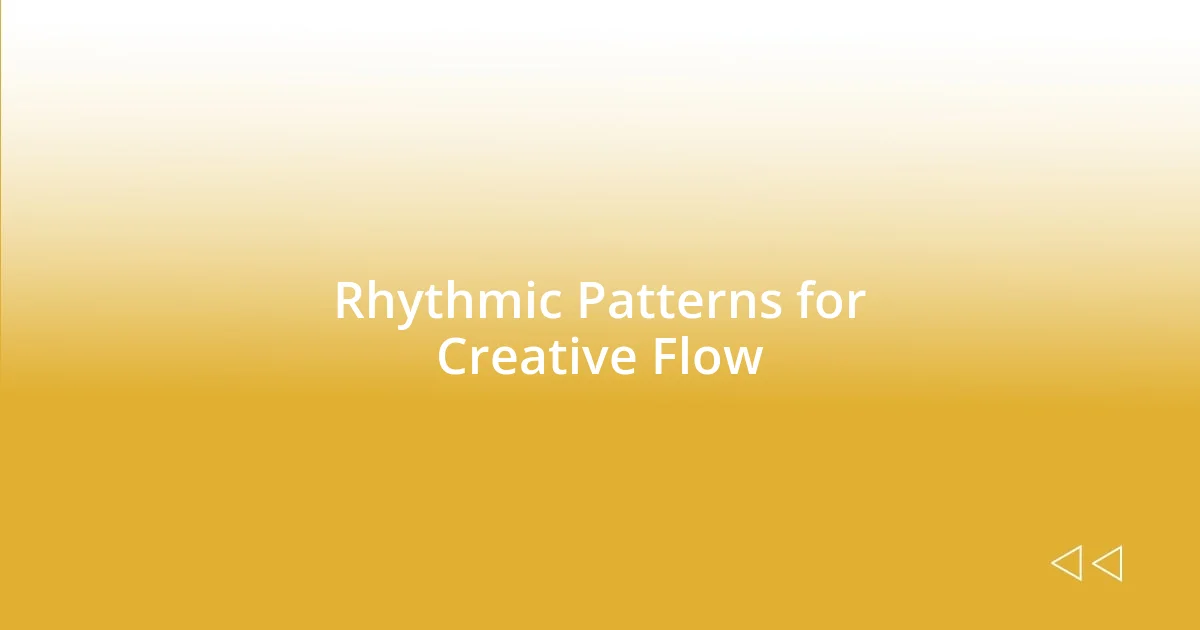
Rhythmic Patterns for Creative Flow
Rhythmic patterns are the heartbeat of improvisation for me. I remember a jam where I decided to play with syncopation—shifting my emphasis off the beat. It was thrilling! Suddenly, my lines felt alive, like they were dancing around the groove rather than sitting on top of it. Isn’t it incredible how a simple shift in rhythm can ignite the entire performance?
Incorporating polyrhythms has also opened up incredible creative channels. The first time I layered a 3/4 pattern over a 4/4 groove, the resulting tension was intoxicating. I watched my fellow musicians react, their eyes lighting up with newfound energy. It’s a fascinating experience—how your rhythm can interact with others to create a rich tapestry of sound. Have you ever felt like your music was breathing with its own life?
Moreover, exploring various rhythmic motifs can unlock spontaneous creativity. I love to develop a short rhythmic phrase and then manipulate it—stretch it, repeat it, or even invert it. Recently, I played around with a catchy 16th-note pattern, varying its dynamics and attack. The spontaneity that arose from those small changes gave rise to a section that felt both fresh and familiar. It’s a reminder that rhythm isn’t just a backdrop; it’s a dynamic force that propels us into new musical territories.
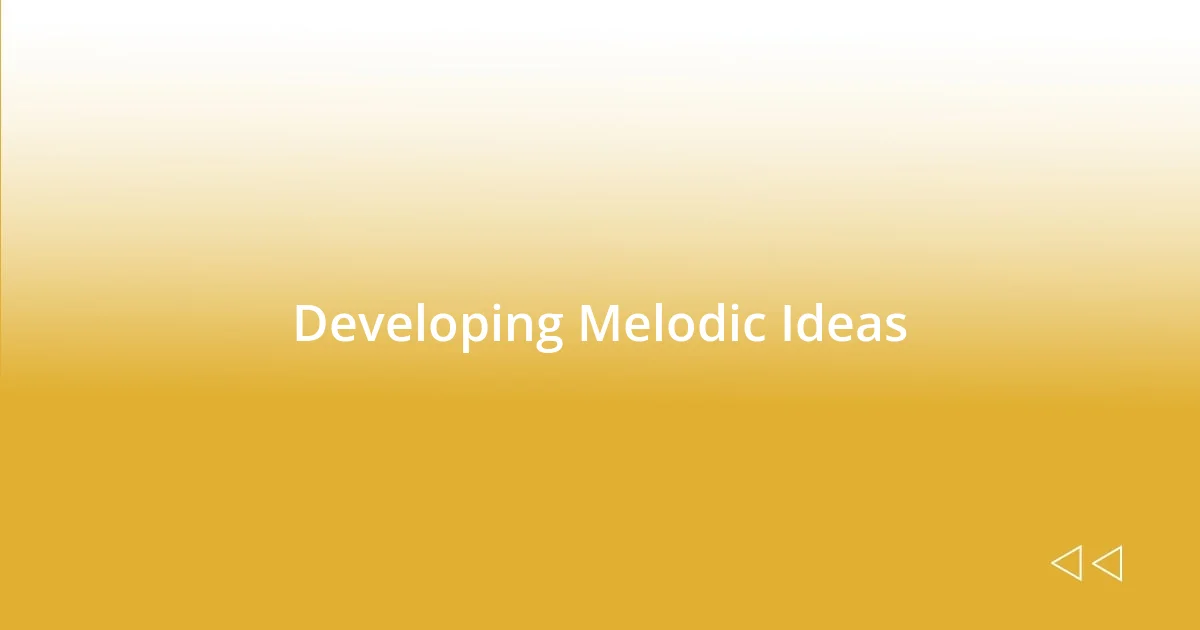
Developing Melodic Ideas
Developing melodic ideas is like sculpting clay; it’s all about shaping and refining. I vividly remember a gig where I was improvising over a minor key. As I played, I explored the relationships between notes, letting my emotions guide me. I realized that sometimes, a simple interval—a minor third, for instance—could evoke deep feelings of nostalgia. Have you ever noticed how a melody can transport you back to a moment in time?
Building off of a core motif is another approach I cherish. I often create a simple melodic phrase and then embellish it, adding grace notes or slides. One evening, I took a straightforward ascending line and, with each repetition, transformed it into something elaborate and lush. The way the melody evolved felt like watching a flower bloom. Isn’t it amazing how the smallest tweak can give birth to a new musical landscape?
Tension and release play a crucial role in developing my melodic ideas. I frequently experiment with dissonant notes, letting them hang for just a moment before resolving. Once, during a particularly intense solo, I held a high note that felt almost uncomfortable before dropping to a much warmer sound. That contrast created an emotional peak that the audience could really feel. Don’t you think that the journey through tension just makes the resolution all the more rewarding?
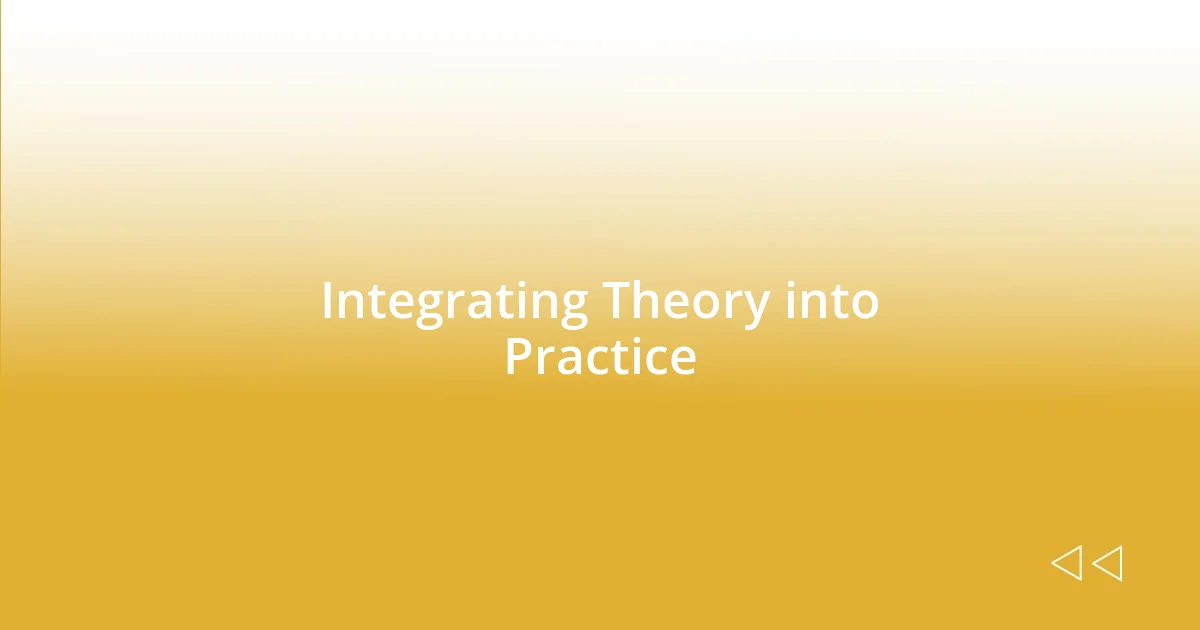
Integrating Theory into Practice
Integrating theory into practice transforms the abstract into tangible musical moments. For instance, when I first delved into modes, I was surprised by how the Dorian mode’s jazzy flavor breathed new life into an old piece I was working on. Each time I used that mode, it felt as though I was unlocking a door to a room full of fresh ideas waiting to spill out—doesn’t the prospect of discovering new sounds excite you?
Understanding scale degrees also shapes my improvisational conversations. I often visualize how chord tones relate within a progression, which adds depth to my solos. Once, during a live performance, I focused on emphasizing the seventh degree while moving through a major scale. That tiny change created a lush harmonic color that caught the band off-guard. Have you noticed how a single note can steer the emotional tide of a piece?
Another key is embracing chord progressions as templates for musical storytelling. I remember a late-night session where I experimented with a simple I-IV-V progression, varying the rhythm while weaving my melodic lines through it. As I played, I felt like I was narrating an unexpected journey, leaving room for surprises along the way. It made me wonder, how often do we let our improvisation tell a story, rather than just showcase our technical skills?










